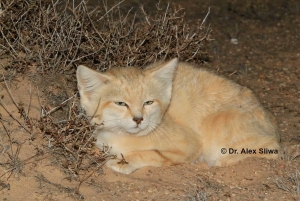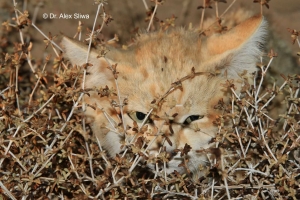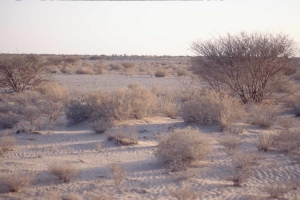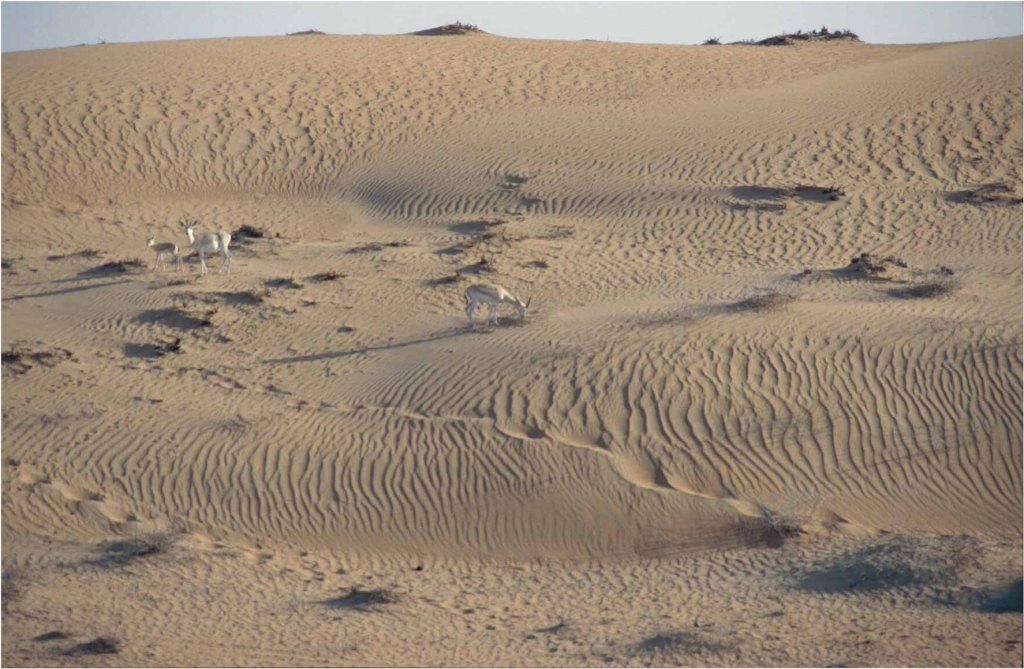How do you save a small wild cat?
 To save them you first have to understand them. You need to go where they live. You need to learn the ecology of these species – activity times and rest periods, the size of the home range and territory year round, the distances they cover every day, social and reproductive behaviours, their prey species and hunting methods.
To save them you first have to understand them. You need to go where they live. You need to learn the ecology of these species – activity times and rest periods, the size of the home range and territory year round, the distances they cover every day, social and reproductive behaviours, their prey species and hunting methods.
When that habitat is shared with other similar sized carnivores, you need to learn how they all co-exist.
Desert carnivores in Morocco
During the spring of 2013, Dr. Alex Sliwa and Gregory Breton (Curator of the Sand Cat breeding program in Europe) made a self-financed trip to the Moroccan Sahara. They observed Sand Cats, African Wildcats, Fennec Foxes and Ruppells Foxes.
Now they are launching the first-ever study on the ecology and behaviour of the Sand Cat in Morocco. While the Sand Cat is the priority species for research, they will also be studying those three other carnivores to determine how the Sand Cat co-exists in their shared habitat.
Never studied in Morocco, the distribution of the Sand Cat is still unclear. Between 1971 and 2000 only a few specimens had been observed in the wild. However, since 2005 and with a growing number of sightings in the Moroccan Sahara region, an enduring presence of Sand Cats is confirmed.
How do you find a small wild cat in the desert?
Researchers actively search for them with a 4×4 truck, driving at low speed, at night, shining a 100W spot lamp in a sweeping motion to detect the eyeshine reflection of carnivores. Once located, they net the animal which has taken refuge in the shrubs. When the cat has been sedated, they are measured and given a health check, then fitted with a radio collar. These animals will then be followed with an receiver and antenna to determine their movements.
Ongoing Sand Cat research
Once sufficient data is collected from radio-telemetry equipment and tracking collars then it is fully possible to:
 expand the study to the whole country to determine where the species are living in high, medium and low densities and where they are missing.
expand the study to the whole country to determine where the species are living in high, medium and low densities and where they are missing.- motivated by the study, train students and/or local employees for field work, recording and tracking the collared Sand Cats, African Wildcats, and Foxes
- develop a partnership with local schools to speak in class and praise the animals to school children
- during peer conferences, meetings and media events, spread the results and knowledge learned
You can help
The researchers would like to study these animals over several years to collect data throughout their lives, ideally covering several generations. But the duration of this program will depend on funds provided by the supporting donors.
Your support for this project will enable the researchers to determine the status of Sand Cats in this part of the Sahara, and begin conservation plans for their future.


![]() See our fact sheet for more information on the appealing little Sand Cat.
See our fact sheet for more information on the appealing little Sand Cat.
